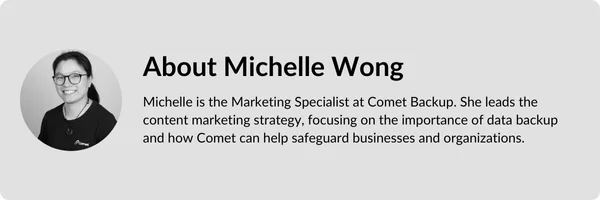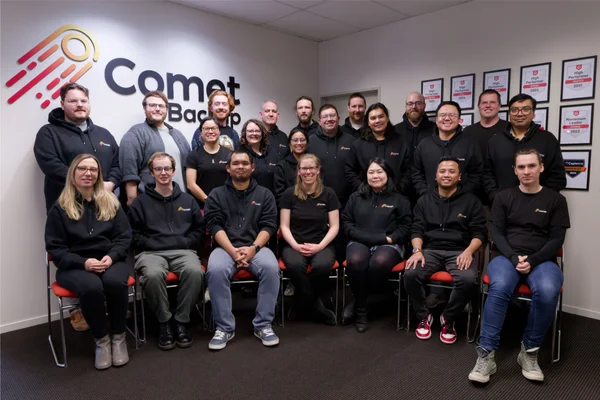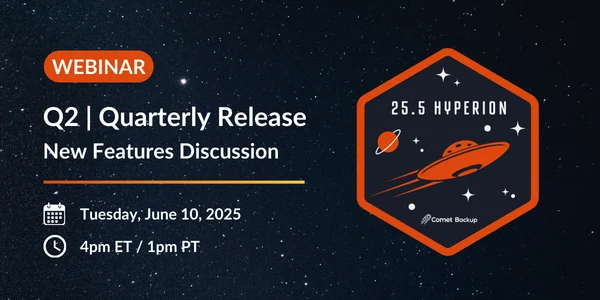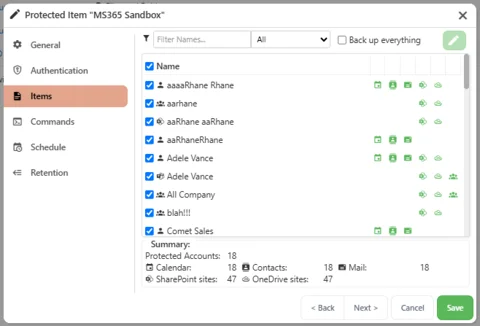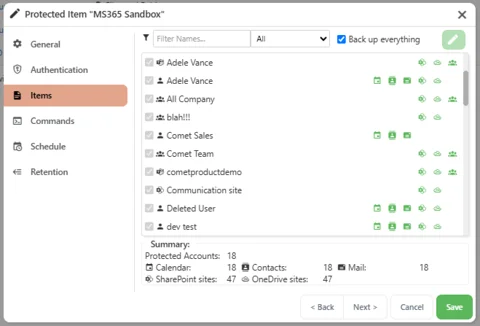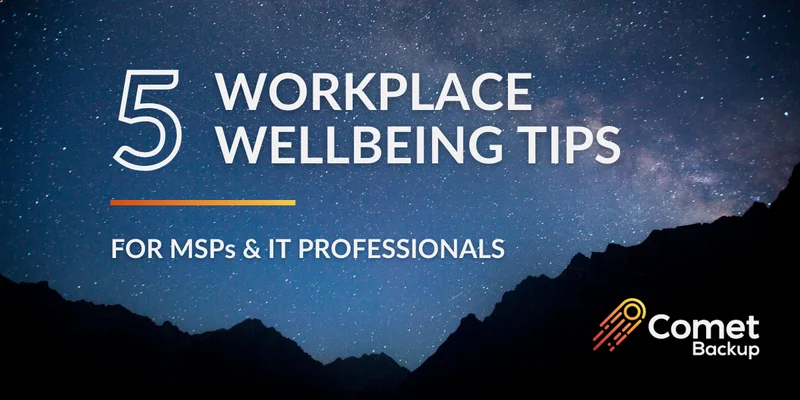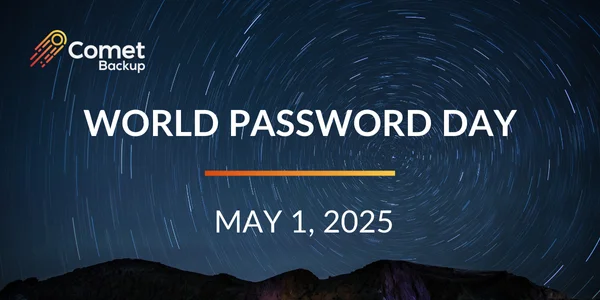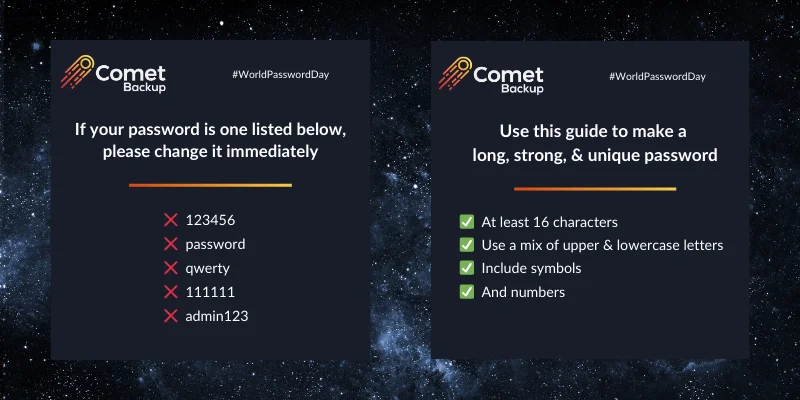Written by Michelle Wong - Marketing Specialist

We sat down for a chat with Noel Reyes, one of Comet’s Software Developers who has been with the company since October 2022. This piece has been lightly edited for length and clarity.
Where have you seen Comet’s dev team make an impactful difference for customers?
In our feature voting system, we had a highly requested feature for user groupings. I’m proud of the work Ben Frengley and I undertook to build that feature together.
Before customers were using the tenant feature in a way we hadn’t anticipated. We heard that feedback and built user groups specifically to make it easy for MSPs to group their clients and users, and for companies to group users by department. It really made a difference for customers and is a very handy feature.
How does the feature voting system inform what makes it onto Comet’s product roadmap?
Whenever we're making decisions about what will be included on the quarterly product roadmap, feature requests heavily influence what we decide to build and work on because we can see which features customers want.
If it's a highly requested feature, it goes into consideration for the roadmap, then we start developing. We listen to our customers and their needs. Feature voting allows us to see the number of customers that want a feature. When a feature gets a lot of up votes, we say, let's make these customers happy. Let's make it a reality for them, from feature request to reality.
What attracted you to work at Comet?
All the new things that I could learn. It's not just programming, but also actually understanding all the different technologies we back up and the integration partners we work with.
You're handling Windows, you're handling Linux, you're handling Mac, and then there's a range of storage providers. One storage provider can work differently from another.
More often than not at Comet your day-to-day will be different. The endless learning opportunities is what really attracted me.
You were a mentor to Liam, one of Comet’s junior developers. What did you enjoy about being a mentor?
At the beginning of my career, in my first internship, I had a mentor who said something that really stuck with me – he wanted to be the senior mentor that he wished he had when he was a junior developer. He was a really good mentor for me and I wanted to take that same approach and be a good mentor for Liam.
To me, a good mentor means being available for any questions, teaching best practices, and making the mentee feel comfortable with the overall work, so I wanted to pay it forward.
So whenever Liam has any questions, I'm more than happy to answer and help him learn. When something is going well for Liam, it makes me proud. He's learning and he's making things that help our customers now. It’s great getting to see his work have that impact.
What advice would you give to an aspiring developer?
Just try to write code as much as you can. Debug for 15 to 30 minutes. If you are struggling or can't figure out the answer, it’s okay to stop and ask for help. Don't be afraid to ask questions. We're more than happy to help.
What's your favorite thing about working at Comet?
At Comet, the work-life balance is top tier. It's the best company I've ever worked for, including other previous workplaces. No one comes close to the work culture and the people at Comet.
My favorite thing about working at Comet is definitely the people. It's really nice to be working with like-minded people. It's fun. You can talk about your hobbies, video games, and hiking. It’s not always about work.
I really like CometCon, our internal company conference. Especially hearing talks from the different departments that I don’t normally interact with, like Marketing, Customer Success, and Sales. It’s great to learn about other areas of the business outside of the dev teams and the software side of things.
What does your work week look like at Comet?
We have Monday and Friday in the office where you can have a chat and in-person interactions with people. On Tuesday, Wednesday and Thursday we have the option to work from home if we want to. I find those days are good for working on things that need a state of deep focus.
It's really nice because our hours are flexible. As long as you're doing your eight hours per day, if you have errands during the day, you can make up the hours later in the evening.
How would you describe the team culture at Comet?
It's open. I really like it because everyone feels welcome to ask questions. Even if you are a senior developer or the CTO, it doesn’t mean you have to know everything, you can still ask questions and people are more than happy to answer and help.
People are humble and don’t have egos. For example, I have more years of experience than Jackson. But I find myself sometimes saying, "Oh, I never knew that. Jackson, how did you do that?" Then he will be more than happy to answer my question.
What is your earliest memory of technology?
When I was in high school, my sister worked for an internet café in Manila in the Philippines. When she took me there, that was the first time I saw computers. We didn’t have one at home. From then on, when we went to the city, I would look forward to going to the internet café to browse the internet and play computer games like Counter Strike, or pinball on Windows XP. I was really fascinated with how computer games work, and how they were connected with other computers.
How did you get into software development?
When I was in university, I had a conversation with my uncle who worked for the Philippines government’s department of science and technology. He suggested that I should study computer science. It wasn’t on my radar, but after my uncle suggested it, when I took a computer science course, I really enjoyed it. I was fascinated with the programming side of computer science and always looked forward to programming.
Tell us about your journey of becoming a developer.
I started with an internship in the IT department at a hospital. That was my first time seeing how programming was done in real life and what it’s actually like versus writing code and submitting it to your professor. In the internship, I was writing code and could see when I opened the software that I did that, I contributed to that, so I really enjoyed that feeling.
Then my first developer job was in Manila for a US client, an e-learning platform. That was my first introduction with Git and meddling with the server, configurations and networking, I learned a lot there. I started as an intermediate developer there, then I got promoted to the lead software developer and I was leading the whole team.
When I came to New Zealand, I got hired in the IT department for a geotechnical firm and I learned a lot there, like working with Linux. Then I came to Comet.
What do you like about living in Christchurch?
I love that Christchurch is in close proximity to pretty much everything. You’re near the sea, the mountains, the hills, hiking and ski areas. I also love that there are a lot of local walking trails around Christchurch and easy access to outdoor activities. Plus, there's also a lot of good restaurants and cafes.
What are your hobbies and interests?
I love being outdoors, going hiking, and mountain biking. I love exploring the mountains and seeing the views when you’re high up, it’s astonishing. My favorite hike is the Milford Track, it was amazing, nothing else comes close. I’ve done a few of the longer bike trails, the Otago Rail Trail, the Millennium trail, and other bike trails in the Otago area.
